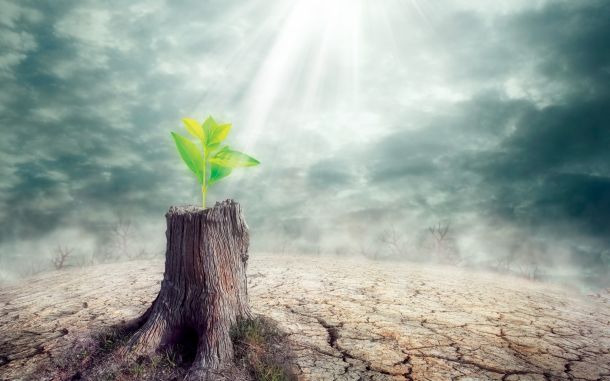Mercy, Drop by Drop

In This Article
-
Thanks to the incredible water cycle our world is blessed with, our crops are cultivated, forests flourish, and life goes on.
-
Depending on the shape and mass of an object that is released from a height, the forces acting upon that object (air buoyancy and gravity) reset each other at a certain point and the object's velocity does not decrease or increase.
-
The micro-layer of the sea’s surface, or the thin membrane having a thickness less than one-tenth of a millimeter, has a rich source of organic wastes from the decomposition of microorganisms.
Water is an essential component of life as we know it. When studied carefully, one is baffled to find out how water is circulated from the oceans and land to the sky, so that the Earth is made a habitable place for us. Thanks to the incredible water cycle our world is blessed with, our crops are cultivated, forests flourish, and life goes on.
The average amount of water that evaporates every year is around 577,000 cubic kilometers, and 86 percent of this evaporation comes from oceans and seas. In other words, the water that evaporates globally every year is roughly equal to the amount of water in the Black Sea in Europe. As this water evaporates, it leaves salt and other foreign materials behind. Around 10 percent of the water that evaporates is transported by winds as clouds to land [1]. In a miraculously merciful manifestation, the water is removed from salt and sent down on earth so that the living beings can benefit from it.
Of course, this would not be possible if the atmosphere was not a perfect medium for water to move around the world. At any time, the volume of water in the atmosphere is approximately 12,900 cubic kilometers in the form of heavy masses that are constantly on the move. A cloud with a volume of 1 cubic kilometer can have around 550 tons of water [2]. Yet, this water does not come down on us all at once. Rather, raindrops move around in the sky in the form of clouds until they become heavier and fall on earth.
Rain clouds are generally found at an elevation of 1,200 to 2,000 meters. These clouds can bear the highest amounts of water. Yet, rain clouds can be found at an elevation of 7,000 meters as well.
Upon evaporation the water clings onto dust granules or electrically charged particles to form droplets with sizes varying between 1 and 10 microns but they can occasionally be larger [3]. These tiny droplets that are hardly visible to the eye can easily remain suspended in the air.
As clouds move upward at a velocity of 1-10 meters per second due to wind and air pressure water droplets can readily climb up along with the clouds. As they go up, water droplets can merge with other droplets, growing in volume and mass. Their velocity of moving up decreases as their weight increases. At a certain point, the particles in the air can no longer carry the water droplets. As they fall down they collide with smaller raindrops and continue to grow in size and mass. Depending on their masses their velocities increase gradually. Raindrops that have the same size have the same acceleration and move in the same direction and, therefore, distances among them remain the same and they do not collide with each other.
A raindrop has a spherical shape due to the surface tension of water. Water molecules at the surface are pulled by inner molecules. This results in a tension on the surface and reduces the surface area to the minimum to form a sphere.
An average raindrop is made up of around 1 million water droplets. When the radius of a raindrop exceeds 5 mm its spherical shape starts to change because of air friction and its bottom becomes larger. Eventually, the raindrop is split into smaller ones in the air. The reason for this split is that the air flow at the bottom of a raindrop is greater than the one at its upper part. Therefore, the pressure below is greater than the pressure above and this breaks the raindrop into two smaller ones. As a result these raindrops will have smaller masses and their velocity and acceleration will decrease. This process will be repeated until raindrops reach the earth. The diameter of a raindrop cannot exceed 5 mm when it touches the ground [4]. The speed by which an object falls in an environment with air friction depends on its mass and shape. Objects with greater masses can reach higher velocities. It is truly a sign of mercy that raindrops are not greater than 5 mm in diameter when they touch the ground.
In an environment without air objects fall with an increasing velocity which does not depend on its mass. In such an environment, a raindrop or an iron ball would make the same effect on the ground if they fell from the same height. Without air friction, a raindrop would crash onto the ground with a velocity of 552 km/h from an altitude of 1,200 m, and with a velocity of 1,334 km/h from 7,000 m.
Depending on the shape and mass of an object that is released from a height, the forces acting upon that object (air buoyancy and gravity) reset each other at a certain point and the object's velocity does not decrease or increase. From that point onward, the object starts to fall with a fixed velocity, which is called "terminal velocity."
The speed of a large raindrop, say with a diameter of 5 mm, reaches up to 36 km/h. This is a harmless speed. Raindrops can reach the ground between two to seven minutes depending on the altitude and their size [5].
It is also important to remember that raindrops are water, i.e., liquid, which evaporates and cools down during friction with the air, unlike the solid objects which could have scorched everything when they reached the ground.
Some droplets that evaporate from the surface of seas contain nutrients essential for soil. The micro-layer of the sea’s surface, or the thin membrane having a thickness less than one-tenth of a millimeter, has a rich source of organic wastes from the decomposition of microorganisms. These organic nutrients are transported by evaporating droplets first to clouds and then to the earth. Raindrops provide plants with nutrients they need in order to grow. These nutrients carried by rain can give barren soils the elements required for plants. This process is also beneficial to forests. Thanks to this process, 150 million tons of nutrients are transferred to the land every year [6].
The amount of the water sent down on earth is by proportions God has ordained: "And Who sends down water from the sky in a measure; and We raise a dead land to life with it -- even so will you be (raised from the dead and) brought forth (from your graves) (Sura Az-Zukhruf, 43/11).
The amount of the water that evaporates and precipitates are fixed in a type of cycle. They do not increase or decrease. Prophet Muhammad (peace and blessings be upon him) said: "No year is rainier than any other year." [7]
God is He Who sends forth the merciful winds, so that they set clouds to move, and He spreads them in the heaven in the manner that He wills, and makes them aggregated particles, and there! You see rain issuing from their midst! When He has caused it to fall on such of His servants as He wills, they rejoice. (Ar-Rum, 30:48)
Do you not consider that God sends down from the sky water, and behold, the earth turns green. Surely, God is All-Subtle, All-Aware. (Al-Hajj, 22:63)
References
- GRID-Arendal (UN Environment Programme), www.grida.no/resources/5623
- “How much does a cloud weigh,” www.usgs.gov/special-topic/water-science-school/science/how-much-does-a-cloud-weigh
- “Raindrops are Different Sizes,” www.usgs.gov/special-topic/water-science-school/science/raindrops-are-different-sizes
- “The Real Raindrop Shape Is Not a Teardrop,” sciencenotes.org/the-real-raindrop-shape-is-not-a-teardrop/
- “Global Precipitation Measurement”, gpm.nasa.gov/resources/faq/how-fast-do-raindrops-fall
- Kasım Yenigün and M. İrfan Yeşilnacar, "Su Damlasında Bilim ve Din" (Science and Religion in a Water Drop), Katre (On Economy), Istanbul: İstanbul İlim ve Kültür Vakfı Yayınları, 2017/3, dergipark.org.tr/tr/download/article-file/309714
- Al-Hakim, Al-Mustadrak, 2/437; Tabari, Jami’a’l-Bayan, 19/22; Bayhaqi, Al-Sunan al-Kubra, 3/363.









